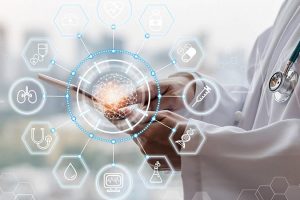EXECUTIVE SUMMARY :
Terminology is core to everything in healthcare—from procedures to results to diagnoses, healthcare IT systems (HIT) represent clinical concepts in various coded clinical terminologies or free text. Unfortunately, the explosive growth in HIT has resulted in patient data being scattered across an array of rapidly proliferating IT systems—each with their own way of representing clinical terms. The variety in terminologies and the variability in how they are used by the systems that compose the healthcare IT ecosystem has created an environment of data locked in silos. This terminology barrier must be overcome if we are to recognize the national effort around increased interoperability, transparency, and collaboration within our healthcare system.
Data normalization strategies that automatically map local content to terminology standards and translate data between standards are required to eliminate ambiguity of meaning in clinical data. From mapping of local codes to standards to creating crosswalks between terminologies to aggregating terminologies into clinical-friendly views of patient data, an enterprise-class data normalization solution can have a significant impact on an organization’s ability to achieve compliance to standards and to capitalize on new business models. By establishing a foundation for achieving semantic interoperability, data normalization enables the data sharing and aggregation aims of the federal Meaningful Use (MU) initiative and contributes to the financial success of emerging healthcare delivery approaches such as Accountable Care Organizations (ACOs).
Though data normalization in itself is not the endgame, it is the foundational process that enables healthcare organizations to answer critical questions, better report to registries, better report quality measures, and better analyze patient care.
INTRODUCTION :
The steady growth of healthcare information technology (HIT) in recent years has ushered in a new era of automation. Technology adoption is slated to continue. Research and Markets forecasts that the North American HIT market will reach $31.3 billion by 2017, compared with $21.9 billion in 2012. 1 The use of enterprise health records (EHRs) among physicians has expanded dramatically since 2001. That year, only 18 percent of office-based physicians reported using some form of EHR system, according to theCenters for Disease Control and Prevention. 2 But in 2013, 78 percent of physicians said they were using EHRs, the federal agency noted.
But there’s a downside to this unprecedented adoption of healthcare technology. Today, patient data is scattered across an array of rapidly proliferating IT systems—each with their own way of representing clinical terms. Healthcare has a rich history of using multiple descriptions—is it a heart attack, acute myocardial infarction,or cardiac arrest? Hypertension, arterial hypertension, or high blood pressure? Ibuprofen or Advil? 4 The lack of a common clinical vocabulary across disparate systems creates communication barriers,which hinders the ability to coordinate care and aggregate data for analysis.




















